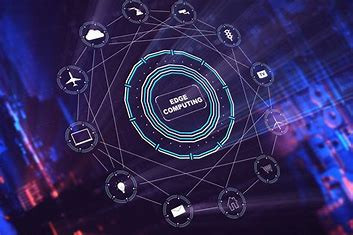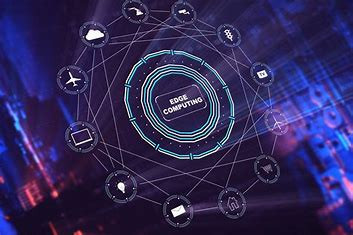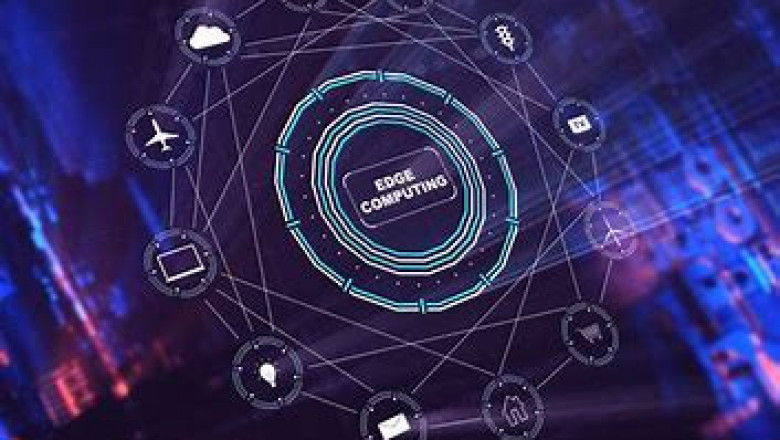views
In today’s fast-paced digital world, data is generated at unprecedented speeds. From smartphones and smart appliances to autonomous vehicles and industrial sensors, modern devices are producing massive volumes of data every second. Traditionally, this data was sent to centralized cloud servers for processing and storage. But with increasing demand for real-time responses, edge computing is emerging as a transformative solution.
What is Edge Computing?
Edge computing refers to the practice of processing data closer to its source—at or near the edge of the network, rather than relying solely on centralized cloud data centers. This allows for faster decision-making, reduced latency, and improved bandwidth efficiency.
Imagine a smart surveillance camera that identifies suspicious activity. Instead of sending video footage to a distant cloud server for analysis and waiting for a response, edge computing enables the camera to analyze the data locally and trigger an immediate alert if needed.
Why Is Edge Computing Gaining Traction?
1. Low Latency Requirements
Applications like autonomous vehicles, remote surgeries, industrial automation, and real-time video analytics require lightning-fast decision-making. With edge computing, data is processed in milliseconds, eliminating delays associated with cloud communication.
2. Reduced Bandwidth Usage
Transmitting large volumes of data to the cloud consumes significant network bandwidth. By processing data locally and sending only relevant information, edge computing optimizes bandwidth usage and reduces infrastructure costs.
3. Enhanced Privacy and Security
Since sensitive data doesn’t always need to leave the local device or network, edge computing helps address privacy concerns and compliance regulations, especially in industries like healthcare and finance.
4. Increased Reliability
Edge computing systems can function independently of the cloud, which is crucial in remote areas or critical environments where connectivity may be unstable or intermittent.
Key Use Cases of Edge Computing
Edge computing is already transforming various industries:
-
Healthcare: Wearable devices and diagnostic machines process health data in real time to alert doctors of abnormalities.
-
Retail: Smart shelves and in-store sensors monitor inventory, customer movements, and preferences.
-
Manufacturing: Industrial IoT (IIoT) sensors detect machine failures and quality issues instantly, improving production efficiency.
-
Smart Cities: Traffic lights, surveillance cameras, and pollution sensors make real-time decisions to improve urban living.
-
Agriculture: Edge-based sensors track soil quality, weather conditions, and crop health for precision farming.
Edge Computing vs. Cloud Computing
While cloud computing centralizes storage and processing, edge computing distributes it across multiple local nodes. However, edge and cloud computing are not competitors — they are complementary. The best solutions often use a hybrid approach, combining the scalability of the cloud with the speed of edge processing.
| Feature | Cloud Computing | Edge Computing |
|---|---|---|
| Location of Processing | Centralized Data Centers | Local devices or edge nodes |
| Latency | Higher | Minimal |
| Bandwidth Usage | Higher | Lower |
| Ideal For | Big data analytics, storage | Real-time processing, local actions |
| Connectivity Need | Constant | Limited |
Challenges in Adopting Edge Computing
While the potential is vast, edge computing comes with certain challenges:
-
Hardware Costs: Edge devices require advanced processing capabilities, which can be expensive.
-
Scalability Issues: Managing thousands of distributed devices can be complex.
-
Security Risks: While edge reduces some privacy risks, edge devices themselves can be vulnerable if not properly secured.
-
Standardization: Lack of universal standards can create compatibility issues between vendors and platforms.
The Future of Edge Computing
According to industry analysts, the global edge computing market is projected to reach over $100 billion by 2030. With the rise of 5G, smart cities, connected vehicles, and Industry 4.0, edge computing will become even more critical.
Emerging trends include:
-
Edge AI: Combining edge computing with artificial intelligence for instant insights.
-
Edge containers and microservices: Making deployment on edge devices more flexible and scalable.
-
Integration with blockchain: Enhancing trust, security, and traceability at the edge.
Partner with Hexadecimal Software for Smart Edge Solutions
Edge computing opens up immense opportunities for businesses across sectors — but it requires the right technological foundation. At Hexadecimal Software, we help enterprises design and implement custom software solutions that leverage the power of edge devices, IoT integration, and cloud coordination. Our solutions enable faster decision-making, efficient operations, and enhanced user experiences.
Also, don’t forget to check out the HexaHome Blog — your go-to destination for the latest in real estate tech, smart homes, and digital transformation in India.
















Comments
0 comment